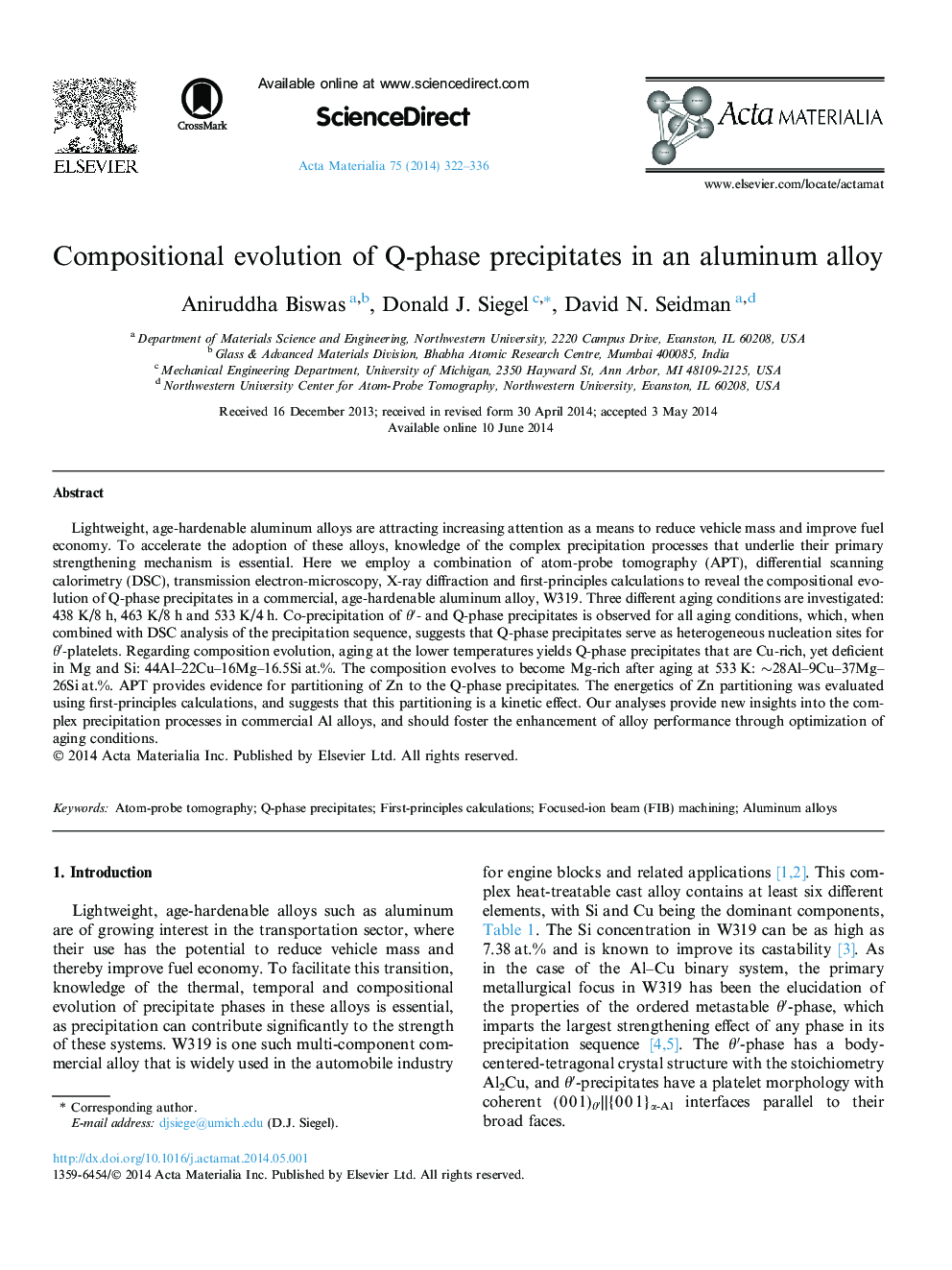| Article ID | Journal | Published Year | Pages | File Type |
|---|---|---|---|---|
| 1445489 | Acta Materialia | 2014 | 15 Pages |
Lightweight, age-hardenable aluminum alloys are attracting increasing attention as a means to reduce vehicle mass and improve fuel economy. To accelerate the adoption of these alloys, knowledge of the complex precipitation processes that underlie their primary strengthening mechanism is essential. Here we employ a combination of atom-probe tomography (APT), differential scanning calorimetry (DSC), transmission electron-microscopy, X-ray diffraction and first-principles calculations to reveal the compositional evolution of Q-phase precipitates in a commercial, age-hardenable aluminum alloy, W319. Three different aging conditions are investigated: 438 K/8 h, 463 K/8 h and 533 K/4 h. Co-precipitation of θ′- and Q-phase precipitates is observed for all aging conditions, which, when combined with DSC analysis of the precipitation sequence, suggests that Q-phase precipitates serve as heterogeneous nucleation sites for θ′-platelets. Regarding composition evolution, aging at the lower temperatures yields Q-phase precipitates that are Cu-rich, yet deficient in Mg and Si: 44Al–22Cu–16Mg–16.5Si at.%. The composition evolves to become Mg-rich after aging at 533 K: ∼28Al–9Cu–37Mg–26Si at.%. APT provides evidence for partitioning of Zn to the Q-phase precipitates. The energetics of Zn partitioning was evaluated using first-principles calculations, and suggests that this partitioning is a kinetic effect. Our analyses provide new insights into the complex precipitation processes in commercial Al alloys, and should foster the enhancement of alloy performance through optimization of aging conditions.
